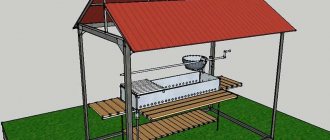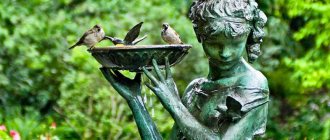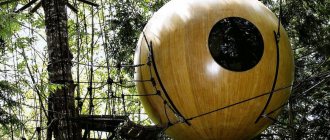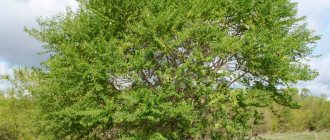Dear readers! Cultural values have always aroused the admiration of all peoples. Tell me, do you know that there are sculptures that were made decades ago and still raise many questions for their authors. The masterpieces of some masters lead to bewilderment, adding riddles to each element of the statues.
Do you know what the most famous sculptures in the world look like today? I will tell you about the most amazing works of all time. For every person, regardless of place of residence, it is very important to know the great sculptors, without whom it is impossible to imagine the cultural world.
Characteristic
Sculpture is a type of fine art in which artists create three-dimensional figures. They use hard or plastic materials in their work. Masters depict people, animals, plants and other objects of the surrounding world. Sculpture often overlaps with architecture because both art movements are concerned with volume and space.
Place of the duel of M. Yu. Lermontov
The main task is to create a realistic or idealized image of a person. Animals and other natural objects occupy a secondary place in their compositions.
Statue of St. George in Orsanmichele, Florence Donatello
According to their content and functions, the following types of sculptures are distinguished:
- Monumental and decorative. It is distinguished by a pronounced public character; it is placed in crowded places - in squares, parks, on the facades of buildings. The main function is to complement the architecture, give it greater expressiveness, and decorate public places. The monumental-decorative form manifests itself in the form of city monuments, monuments and memorials. Usually their creation is dedicated to a significant date or to glorify a famous person.
- Easel . It is not as closely related to architecture as the monumental and decorative form. It can be seen in exhibition halls and in residential interiors. The main function of easel objects is to reveal the inner world of a person.
- Sculpture of small forms. It echoes arts and crafts because it decorates the interior of residential premises. The main difference from the previous one is that its production can be organized on an industrial scale. The easel form is more intimate. There are two directions in this group - mass production and the art of creating single items.
Monument to Minin (left) and Pozharsky (right)
The main distinctive features of the sculpture:
- physicality;
- materiality;
- laconicism;
- versatility.
Saint John the Baptist Donatello
The first two characteristics are related to the fact that a person can tactilely feel the volume. But the highest skill is considered to be the ability to create the effect of “visual touch”. A person can visually feel the volume due to the relationship between depth and surface convexity. The materiality of the sculpture is manifested in the concreteness of the result. It takes shape and becomes a tangible carrier of an artistic idea.
Portico of the Erechtheion Temple
The laconicism is due to the fact that the sculpture is almost devoid of plot. The ease of its perception is illusory. The master expresses abstract ideas in a concrete, tangible object.
The rebel slave Michelangelo
The sculpture is used for:
- decoration of public places and residential interiors;
- additions to architecture to enhance its artistic expression;
- glorification of a historical figure or event.
Equestrian statue of Gattamelata by Donatello
Sculpture is the art of transforming space with the help of volume. At different times, masters had their own understanding of the relationship between depth and space. Sculptors, as sculptors were also called, created monuments in accordance with generally accepted canons of beauty.
Beautiful but fragile
Using plaster, PVA glue, moisture-resistant glue and acrylic paints, you can create plaster sculptures. You just have to remember that plaster hardens very quickly, so everything you need for work needs to be prepared in advance.
You can use any old children's toy as a basis. From a large doll that has served its age, you can create a sculpture of a person.
You should spread the gypsum solution onto the base in several layers, let it dry well and then paint it as you wish.
Classification of sculptures
This type of art becomes so part of everyday life that people stop noticing it. All this speaks of the diversity of sculpture. With the help of expressive means and materials, a master can create a majestic monument or a small composition. But sculpture differs in types and genres.
Triumphal Arch. Paris
Based on three-dimensional volume there are:
- round;
- relief.
Tombstone stele of Gegeso
Round sculptures are placed in free space so that they can be viewed from any point. Therefore, it is possible to perceive the sculpture differently each time, which increases its aesthetic value. There are four types of round plastic:
- monumental;
- monumental and decorative;
- easel;
- small forms.
Triumphal Arch of Constantine
Monumental monuments are large-scale objects that amaze with the scope of their artistic ideas. They can become a decoration of the landscape, square or part of an architectural ensemble. Metal or granite is usually used to create them. There are several subtypes of such sculpture:
- A monumental statue - the object must be viewed from a long distance. Therefore, it is placed on a hill or on the main square (E.V. Vuchetich and N.V. Nikitin “Motherland”, Frederic Auguste Bartholdi “Statue of Liberty”).
- Monument is a monument dedicated to an important historical date or dedicated to a famous person, placed on a pedestal (Etienne Maurice Falconet “Bronze Horseman”, Ivan Martos “monuments to Minin and Pozharsky”).
- A stela is a vertical slab on which an inscription or a convex design is engraved (“Hegeso ceramic stele”).
- Arc de Triomphe - its construction is timed to coincide with military victory and other significant events (“triumphal arch in Paris”, “triumphal arch of Constantine”);
- Obelisk is a pillar with 4 sides, with the top resembling a pyramid (“Dolgorukovsky obelisk in Simferopol”, “obelisk at the site of M.Yu. Lermontov’s duel”).
- The rostral column is an architectural object with sculptural images of the bow of a ship.
- A statue is a work of art, represented by a single or multi-figure composition (Edward Eriksen “The Little Mermaid”, Auguste Rodin “The Thinker”).
Dolgorukovsky Obelisk
Monumental and decorative sculpture can be an element of architectural design. Objects become decorations of the landscape and buildings. There are several types of such sculpture:
- atlas - a column in the form of a male figure supporting balconies and cornices (A.I. Terebenev, “Atlas of the portico of the New Hermitage building in St. Petersburg”, L. Mattielli “Atlas of the vestibule of the Upper Belvedere in Vienna”);
- canephora - a sculptural image of a woman with a basket on her head. Most often it serves as columns (“Porticus of the Erechtheion Temple”);
- console - an artistic object supporting the ledge of a building (consoles with images of elephants in Madrid);
- protoma - an image of a human head or animal (“Iberian protoma of a ram”);
- acroteria - a figure decorating the corners of the pediment (akroteria on the Academy of Athens);
- biga - a chariot decorating an arch or building;
- desudeporte is a decoration of the entrance group, reminiscent of a panel, and is part of the overall architectural design (F.B. Rastrelli, “Desudeporte in the hall of the Grand Catherine Palace”);
- capital - decoration of the top of a column or pilaster;
- mascaron - a relief image of a mask or head;
- sail - stucco molding located at the top of the vault;
- pilaster - a projection of a wall, a conventional image of a column;
- portal - decorative entrance arch;
- rosette - a sculptural ornamental motif reminiscent of a blooming flower;
- frieze - a decorative strip decorating part of an architectural structure;
- pediment - a sculptural composition on a triangular facade or portico.
1 / 7
The easel direction is designed for close-up perception. Most often, the object is made in full size. Easel sculpture is characterized by psychologism, symbolism and metaphor. There are the following varieties:
- bust - an image of a person up to the shoulders, chest or waist (bust of Nefertiti, Gian Lorenzo Bernini “Portrait of Louis XIV”);
- a sculptural group - several people united by a common plot (Auguste Rodin “Citizens of Calais”, Greek sculptors Agesander, Polydorus and Athenodorus “Lacoon and His Sons”);
- statue - a sculpture depicting a person, animals or other objects. The object is placed on a pedestal (“Venus de Milo”, Michelangelo’s “David”);
- torso - May be a fragment of an antique statue or a separate composition.
1 / 3
Sculpture of small forms - small figures and groups decorating the interior:
- tabletop portraits;
- toys;
- figurines in a certain genre.
Another large group is relief, which is designed for frontal perception. It can be a separate object or an element of architectural design. Masters depicted mythological subjects, landscapes, and people. The relief gives the sculptor more opportunities for creativity. There are several types:
- bas-relief - the composition protrudes less than half above the plane. They decorated walls, pedestals, and coins. During the Renaissance, a variety of it appeared - a picturesque bas-relief. The peculiarity is that the outlines of the figures are almost flat, and the background is represented by a barely noticeable outline (the Assyrian bas-relief “Winged Genie”);
- high relief - the image protrudes above the plane by more than half the volume. Often the figures are referred to as a round sculpture (François Rude "La Marseillaise" on the Arc de Triomphe in Paris);
- counter-relief - the outlines go deep into the plane;
- koylanaglyph is a type of relief with a concave contour and convex modeling.
1 / 2
Art historians distinguish the following genres of sculpture: animalistic and figurative, which includes the following areas:
- mythological;
- portrait;
- symbolic;
- religious.
The boundaries between them are arbitrary, so one group is often classified as several genres.
Easel
It is distinguished by its metaphorical meaning, symbolism, storytelling and deep psychologism. Such statues are close in size to the natural size (the dimensions of the sample object) and are designed to be perceived from a short distance. Easel sculptures most often decorate home interiors or areas of parks and gardens. There are a number of subtypes of this composition:
- bust – shoulder-length, bust or waist-length image;
- group - several characters connected by a common plot;
- statue – the figure is life-size;
- small forms - figurines, souvenirs and collectible toys for decorating a small interior.
Materials
The appearance of the object and what technique the master will use depends on it:
- Stone. Marble is ideal for creating fine lines and details, smooth transitions. Its disadvantages include the absorption of moisture, which leads to a change in color. Granite is harder and denser, it does not collapse under the influence of moisture. This breed is suitable for creating clear geometric shapes and lines. When working with stone, the master chooses a carving technique.
- Metal. Bronze is suitable for creating a dynamic composition; monumental sculptures are made from steel. Such objects are most often placed in open spaces. First, the master makes the base, and then pours metal into the workpiece. The figure can be cast entirely or assembled in parts.
- Tree . Objects are placed only indoors because they quickly break down in open space. The characteristics of wood species vary, which allows the craftsman to create openwork patterns and clear lines. The master uses carving and carving techniques.
- Clay and gypsum. They have high ductility, which allows you to make any bend. To create sculptures from these materials, the master works using sculpting and casting techniques.
Mary Magdalene Antonio Canova
Sculptors can also use gold, jade, quartz, but they are rarely used in modern works. Ivory was used to create images of animals and other environmental objects.
Majestic Golden Buddha statue
The large statue rises more than 2.5 meters. Large sizes are not the main feature of this figure. Scientists were amazed that this figure was cast from gold and had a solid base. For a long time it did not arouse interest because it was believed that it was made of plaster.
When the war with Burma broke out, the ruler ordered the work of art to be covered with plaster, since Buddha is considered the most revered deity. So the golden deity stood for decades.
In the middle of the last century, for some reason, it was decided to move the sculpture to another place. During transportation, heavy rain began, the Buddha fell and a piece of plaster broke off from him.
The workers noticed that under the coating there was another layer resembling gold. This is how an ordinary plaster figure turned into the most expensive attraction in the whole world.
Subjects
In the portrait genre, the author tries to convey the character of the hero and reveal his personal characteristics. An object can be static or dynamic. The work can be dedicated to a specific historical figure, depicting a specific moment in his life. Or is it a portrait-symbol, for example, the Greek statue of Nemesis - the goddess of retribution.
Nemesis
Sculptors loved mythological subjects. These are multi-figure groups, bas-reliefs. The peculiarity of such compositions is that each participant plays a certain role, but at the same time they interact with each other. Examples of such subjects are the works of Giovanni Bernini “The Rape of Proserpine” and “Apollo and Daphne”.
Apollo and Daphne Giovanni Lorenzo Bernini
When embodying a historical image, the master tries to endow it with the personality traits inherent in the prototype. If this is a composition, then convey social ideas. Typically, such sculptures do not carry symbolic meaning - the sculptors tried to more accurately recreate a historical person or event.
Angel with a candelabra by Michelangelo
The masters also drew inspiration from religious subjects. The construction of the composition depends on the principles of a particular religion. Christian images symbolize humility and forgiveness, Buddhism - calm and harmony, Confucianism - perseverance and determination. Examples - Michelangelo's "Angel", "The Great Buddha of Kamakura".
Great Buddha. Kamakura
The main plot of everyday sculptures is the depiction of people in everyday settings. Such compositions became elements of the architectural and park ensemble. In contemporary art, masters create objects dedicated to social problems. They are installed in unexpected places, which attracts more attention to them.
Terracotta Army of the Qin Dynasty
This unique collection, consisting of several thousand figures, was discovered in 1974 while drilling an artesian well by an ordinary group of peasants. Subsequently, this find became a UNESCO heritage. Artificial warriors, chariots and horses give the impression of the grandeur of the reign of the first emperor “Qin”.
During large-scale excavations, it became clear that this collection was placed next to the tomb of the great ruler for his protection in the afterlife.
The story of the creation of these amazing sculptures ended very sadly. Several dozen people were involved in the creation of the warriors and other components of the collection.
Their remains were subsequently discovered near the collection. Scientists also found that workers were buried alive along with the craftsmen, and the number of the emperor’s concubines amazed modern society. This thought makes the blood run cold, because for the sake of the secret of creating this type of art, more than 80 thousand people died in agony.
An incredible fact that more than one scientist has puzzled over is the weapons of clay warriors. It turned out that over several thousand years it has not even become dull and has its original appearance.
It turned out that during the manufacture of warriors, chromium was used for weapons. This technology was discovered only in the 20th century. How could the masters of that time know about the latest technologies of this type.
It is believed that the tomb where these works of art were discovered is an analogue of the real burial, and the real army with the ruler rests somewhere else.
Most likely, the emperor was afraid that after death his body might be mocked and came up with this option so that he could rest and feel calm in the next world.
The army's presentation periodically takes place with the participation of the most famous minds of science and culture to understand all the nuances of this mysterious find.
Canon of proportions
This concept refers to the ideal relationship between the human figure and other elements of the composition. Different peoples had their own ideas about ideal proportions. The Egyptians had a profile canon, which depended on the size of the hand.
1 / 2
Modern sculpture adheres to the proportions developed by Leonardo da Vinci at the end of the 15th century. The model must be harmoniously folded, and the main measure of the canon is in the head.
Venus Italica Antonio Canova
If you calculate by height, then this is an eighth of the whole body, and the face is a tenth. While in a standing position, a person stretches out his arms. The result is a regular square with lines drawn through the fingertips. The horizontal ones go above the head and under the feet, and the diagonals go through the center.
Perseus with the Head of Medusa Antonio Canova
When they are drawn through the central point, symmetrical halves are obtained. Each is divided into two more equal parts, drawing parallel lines through the middle of the chest and knees. The head is divided into four symmetrical lobes.
Nike of Samothrace
Beautiful and full of expression, the sculpture was found on the island of Samothrace in the 19th century and gained immense popularity among art lovers. It was erected over the island in honor of the goddess Nike, who helped the inhabitants of Rhodes defeat the Syrian king.
She decorated the island, towering above the sea, showing the way for ships. Subsequently, only the main fragment of the goddess was found. He is now in the Louvre without his head and arms, which attracts the attention of even people visiting the museum for the first time.
Stages of creating a sculpture
First, the master must choose the material and what technique he will use, and decide on the type of object. If it is monumental or monumental-decorative, then how will the sculpture be combined with the architectural design. All masters adhere to the same technology:
- Sketch development. Necessary for understanding the general appearance of the composition and calculating the correct proportions. It is done graphically or using a computer program.
- Creation of a working model at the required scale. You will need it to create molds for artistic casting. A working model is made from clay or plasticine. The master sculpts clay onto the frame. After this, he begins detailed work on all parts of the sculpture.
- Removing the mold from the working model for the workpiece. When making sculptures, the artistic casting technique is almost always used. Its features will depend on the material chosen by the master.
- Artistic processing of an object, which includes grinding, embossing, and patination.
- Making a pedestal.
- Placing the object on an elevated position.
Venus and Adonis Antonio Canova
During the work process, the sculptor must consult with the customer so that the result meets his expectations. If the master works on his own initiative, then he should clearly formulate the idea so that he does not have to make significant adjustments in the process.
Pissing boy
Many consider this monument a mockery of the cultural heritage of Brussels. In fact, the residents of Brussels greatly revere this statue as a symbol of victory over their enemies.
There are many legends about where this boy came from. Each of the legends still boils down to one thing: the master, thus, saluted the child who saved the entire state from destruction.
The first myth was based on historical data. So during the war, Godfrey III hung a cradle with a baby on a tree to give courage to the soldiers who fought for the monarchy.
According to legend, the child began to write on the soldiers defending the city. In honor of this event, an unknown master created an unusual symbol of faith and hope.
The second legend, also based on military actions. When the enemy was at the walls of the city and the ammunition was set on fire near the wall, an ordinary boy was able to extinguish the flaming ammunition with the help of a jet.
Of course, the first myth is more plausible and most likely true. Of course, many countries accuse Brussels of misrepresenting the sculpture and making up its heritage.
History of the development of sculpture
Even in ancient times, people were engaged not only in rock painting, but also in plastic art. To do this, he used available materials - stone, wood. Later, engraving appears: a man carves images on animal bones.
Clay was also a common material. Some of the earliest sculptures were found during excavations in Egypt, China, India and the Middle East. In these states, kilns for firing ceramic products were created about 4 thousand years ago. An important achievement in the development of plastic art was the ability to process metal.
Venus from Hohle Fels
In Ancient Greece, sculpture became widespread. Ancient sculptors were looking for the best expression of the beauty of the human body. In the Hellenistic era, a tendency appeared to exaggerate movement and emotionality.
The period of Etruscan sculpture lasted from IX BC. according to I BC The basis was the creations of ancient Greek masters. But the Etruscans added their own distinctive features. The most common theme of their compositions was the afterlife. Roman sculpture was formed under the influence of ancient Greek and Etruscan cultures.
One of the oldest Paleolithic sculptures is the Venus of Hohle Fels. The figure of the Lion Man, 32 or 40 thousand years old, can be attributed to the same group. BC, and Venus of Willendorf, 25 thousand years BC.
During the Romanesque period, sculpture (XI-XIII) was closely intertwined with architecture. The most popular material was wood. During the Gothic era, craftsmen drew inspiration from religion. Therefore, many sculptures are made by order of clergy to decorate cathedrals and temples.
Lion Man
The Renaissance is considered the heyday of plastic art. Sculptors found inspiration in the works of ancient masters. They glorified the ideals of beauty and romanticism. A characteristic feature of this period is that sculpture was separated from architecture. Masters began to demonstrate dramatic expressiveness. Many statues were created on mythological and religious themes. Donatello and Michelangelo are considered the geniuses of Renaissance sculpture.
In the 19th century, the media began to have more influence on the development of plastic art. New directions appeared - avant-garde, futurism, cubism. Masters began to express revolutionary ideas in their works. And to create them they used new materials - concrete, iron, plastic.
Since the 1970s, movements such as minimalism, conceptualism, performance, and hyperrealism have come to the fore. Now the masters are trying to attract the public's attention to social problems, and put the expression of their individuality in the main place.
Statue of Christ the Redeemer
The large-scale sculpture rises above Rio de Janeiro at an altitude of 800 meters. This unique work attracts a large number of tourists. The first idea to build a 38-meter statue of Christ arose 100 years before its first stone.
In 1921, the government remembered the idea, and it was decided to begin work immediately, but no money was forthcoming from the treasury for this.
In order to advance at least one step, they began to urgently collect money from the townspeople, whoever could donate as much as they could. In one week they collected a large amount of more than 2,000,000 reais.
Construction dragged on for a decade, and only in 1931 the world-famous sculpture was discovered and included in the Seven Wonders of the World.
Now Jesus with outstretched arms embraces the entire city and protects it from adversity. So says the local legend. This symbol of Christianity is highly valued, which proves the strength of the faith of the Brazilians.
Sculpture in Russia
Before the reign of Peter I, plastic art served only religious purposes. According to the canons of the Orthodox Church, the image of a naked human body was unacceptable. Therefore, this type of art was not so widespread in Ancient Rus'.
The development of sculpture began during the reign of Peter I and Anna Ioanovna. The main master of this era was K.B. Rastrelli, whose works became the adornment of St. Petersburg. The heyday of sculptural art came in the 18th century. Under Catherine II, the Academy was founded, where future masters were trained under the leadership of N.F. Gillet, discharged from Paris.
Bronze bust of Peter I K.B. Rastrelli
But Russian sculpture had no distinctive features. Despite a number of gifted masters, art developed under the influence of Western trends. During this period, many works worthy of being called world masterpieces were created. Among the most talented sculptors during the reign of Catherine the Great one can single out F.I. Shubina, F.G. Gordeeva, M.I. Kozlovsky.
During the Soviet era, plastic art was a reflection of revolutionary ideas. The main goal was to elevate the image of the “new man” - hardworking, decisive, purposeful. After the victory in World War II, many works appeared devoted to glorifying the feat of the Soviet people.
Anna Ioannovna with little black boy K.B. Rastrelli
Since the 1970-80s. the masters continued to create at the request of the authorities, so they had no opportunity to express their individuality. After the collapse of the USSR, sculptors began to master avant-garde trends that had long been known in the West.
Monumental art
The term "sculpture" is often used primarily to describe large works, sometimes called monumental sculpture. But this definition also covers many types of three-dimensional works using the same techniques, applicable not only to large but also to small sizes.
Sculpture is one of the fine arts that differs from painting in that the sculptor expresses himself by creating three-dimensional figures and shaping space. It includes the art of carving, casting and sculpting. In addition, the use of different combinations of materials created a new artistic repertoire that included processes such as constructivism and assemblage.
The Italian painter Giorgio Vasari (1511-1574) gave the following description of the sculpture seen by his friend: “The sculptor removed all unnecessary things and reduced the material to the form that exists in the mind of the artist.”
Farnese Atlas
The sculpture depicts the Titan named Atlas from Greek mythology holding the celestial sphere. After the battle of the titans and the Olympian gods, Zeus sent all the titans to Tartarus (the abyss under the kingdom of Hades), and placed the firmament on Atlanta's shoulders. In mythology, Atlas was associated with the bearer of knowledge, therefore, when Hercules, in one of his exploits, replaced Atlas and held up the firmament, this was interpreted as a complete transfer of knowledge to people. This is where the name of any maps containing complete information comes from - atlases.
Atlas was also the king of the sunken Atlantis; the Greeks associated the longest mountains in northern Africa - the Atlas Mountains - with his name and believed that Atlanteans lived there. The Greeks also called the high-altitude cliffs that frame the Strait of Gibraltar the pillars of Hercules. And the sea (but actually the ocean) that stretched behind it was called the Atlantic.
Atlas also found its use in architecture when it began to be depicted instead of columns to support structures.
But the oldest sculpture depicting Atlas is the Farnese Atlas, whose author is unknown. Dating back to the 2nd century.
Hermes with the Child Dionysus or Hermes Olympus
A sculpture of Hermes was discovered in Olympia, the birthplace of the Olympic Games. During excavations of the Temple of Hera, a statue of Hermes was found in 1877. Pausanias wrote in his writings that in the temple of Hera there was a sculpture of Hermes by the sculptor Praxiteles. This is how this authorship was established.
Hermes is a classical sculpture and is today in the Olympia Museum.
I wrote an article about Olympia
Elgin Marbles from the Parthenon
Thomas Bruce, 7th Earl of Elgin was appointed British Minister to Constantinople (Istanbul) in 1799. He was interested in Greek antiquity, so he took permission to sketch and take casts of sculptures in various cities of Greece. But instead, Elgin began to barbarously remove the sculptural friezes from the Parthenon and take them to Britain. He managed to remove 12 sculptures from the pediments, 15 metopes, 56 frieze slabs depicting the “Panathenaic Procession” and one of the caryatids of the Erechtheion. In addition, he exported a number of statues and sculptures from other cities in Greece.
Since 1830, after the War of Independence, Greece has demanded the return of all the loot. But so far the UK has not done this. UNESCO considers it necessary to transfer the sculptures back to Greece, but in 2022 the UK again rejected this proposal.
And due to the controversial status of all the Parthenon's assets, the British government has never allowed the sculptures to be exhibited outside the country.
More sculptures can be seen in my article on the Parthenon
Mynelaus with the body of Patroclus
In a copy of the sculpture of the 1st century. AD Minelaus, king of Sparta, holds the murdered Patroclus in his arms during the Trojan War. The original was in Pergamon, but was lost. It is also unknown when and by whom it was performed.
Mynelaus and Patroclus were found damaged in Rome in the 16th century. Cosimo Medici immediately purchased it for his collection and began restoration. In the 18th century there was a second restoration, which corrected the “mistakes” of the sculptors of the Mannerism movement.
Today the sculpture is in Florence.
The next two sculptures date back the 2nd century. AD











